When Twin Peaks first aired in spring 1990, audiences had never seen (or heard) anything quite like it on network television. Immediately, people were drawn into the music of this wonderful and strange world. As part of the Julee in June take over of Twin Peaks Blog, here is an interview by Kent and Keith Zimmerman with David Lynch, Julee Cruise and Angelo Badalamenti published in the music industry magazine “The Gavin Report” from May 11, 1990. It’s incredible how much behind-the-scenes details and stories were shared by the trio in this lengthy piece.
WHAT IS THE GAVIN REPORT?
The Gavin Report was a San Francisco-based radio industry trade publication providing insights into music trends, airplay and other music industry stories that shaped Top 40 radio.
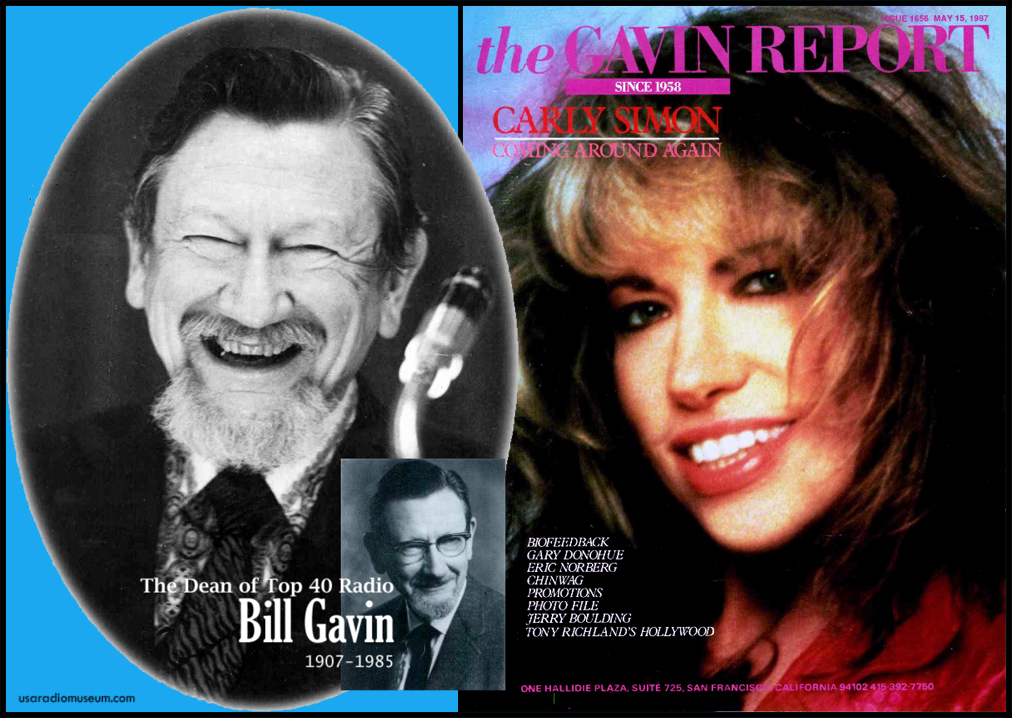
Bill Gavin, often referred to as “The Dean of Top 40 Radio,” founded the publication in 1958. Station manager relied heavily on this publication for decades when deciding what songs to play. He was born on November 6, 1907, in Chetek, Wisconsin and studied at the University of Wisconsin-Eau Claire and University of California, Berkeley.
For two years between 1963-1964, Gavin was an editor and columnist for “Billboard” magazine offering key insight for the ever shifting landscape of the 1960s. He was also a strong advocate for diversity in radio. According to USA Radio Museum, Gavin advocated for “the inclusion of African-American artists and DJs, helping to break down racial barriers in radio during a time when such efforts were not widespread. His progressive stance on race relations contributed to a more inclusive music landscape.”
He organized the Gavin Seminar, an annual networking convention that brought together radio programmers, record executives, and artists.
Gavin died on January 27, 1985, at the age of 77. Ownership of “The Gavin Report” changed hands in 1992 to United Business Media. Ten years later, they stopped the publication due to declining interest and a lack of cooperation from major media conglomerates.
Thankfully, World Radio History has saved digital copies of this important industry magazine.
THE GAVIN REPORT, MAY 11, 1990 | COVER
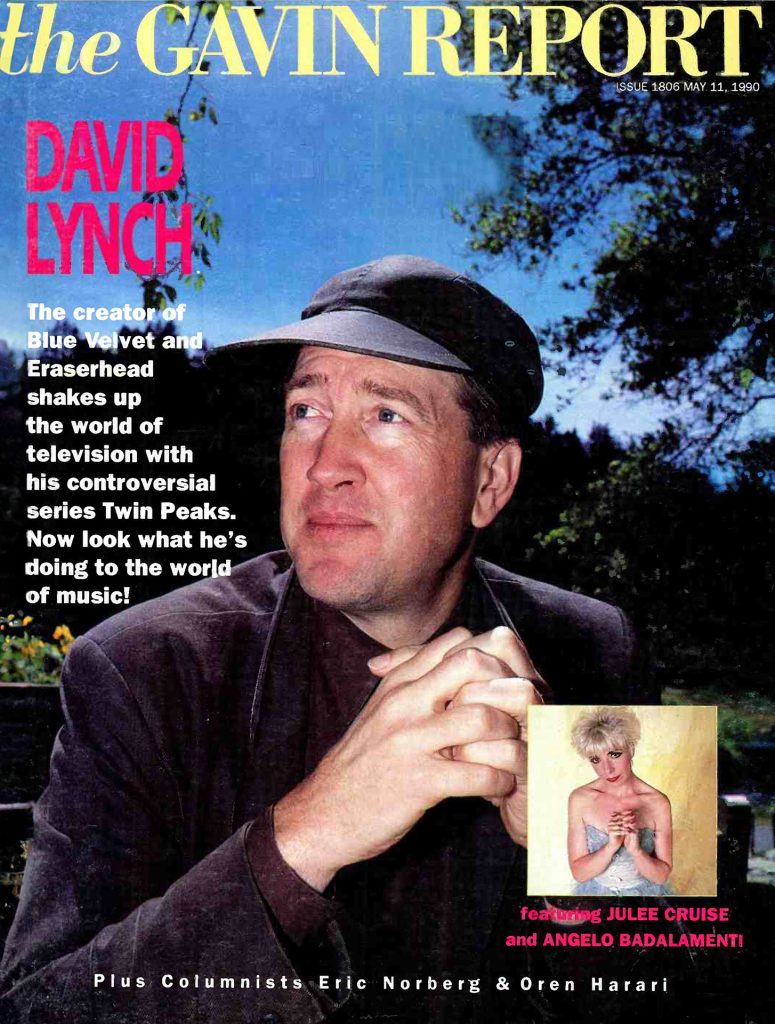
David Lynch and Julee Cruise are featured on the cover of issue 1806 of “The Gavin Report” from May 11, 1990. The photo was taken by Peter Grame who worked for the magazine. The cover story teased Lynch’s interview stating, “The creator of Blue Velvet and Eraserhead shakes up the world of television with his controversial series Twin Peaks. Now look what he’s doing to the world of music!”
The interview would also include details from long-time collaborator Angelo Badalamenti.
THE GAVIN REPORT, MAY 11, 1990 | PAGE 2 – TABLE OF CONTENTS
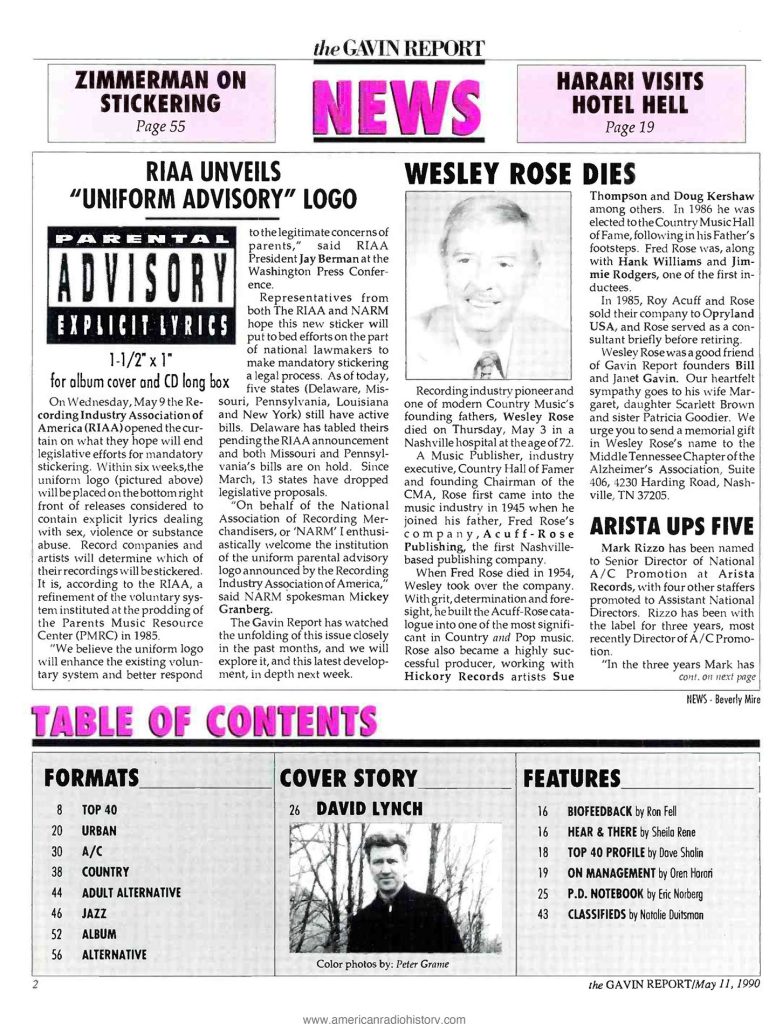
Page 2 contained the Table of Contents with a small image of David Lynch taken in Snoqualmie, Washington during production of Twin Peaks. The cover story by Kent and Keith Zimmerman would be found on page 26.

Here is the uncropped image from the spot known as Ronette’s Bridge along Reinig Road.
Also noted on the page is a first look at a “Parental Advisory / Explicit Lyrics” sticker that would soon find its way onto many music releases. Did that really stop kids from buying music? The Recording Industry Association of America (RIAA) said the stickers would be introduced in six weeks from the time of publication to “hopefully end legislative efforts for mandatory stickering.” Everything old is new again.
THE GAVIN REPORT, MAY 11, 1990 | PAGE 26 – DAVID LYNCH PHOTO
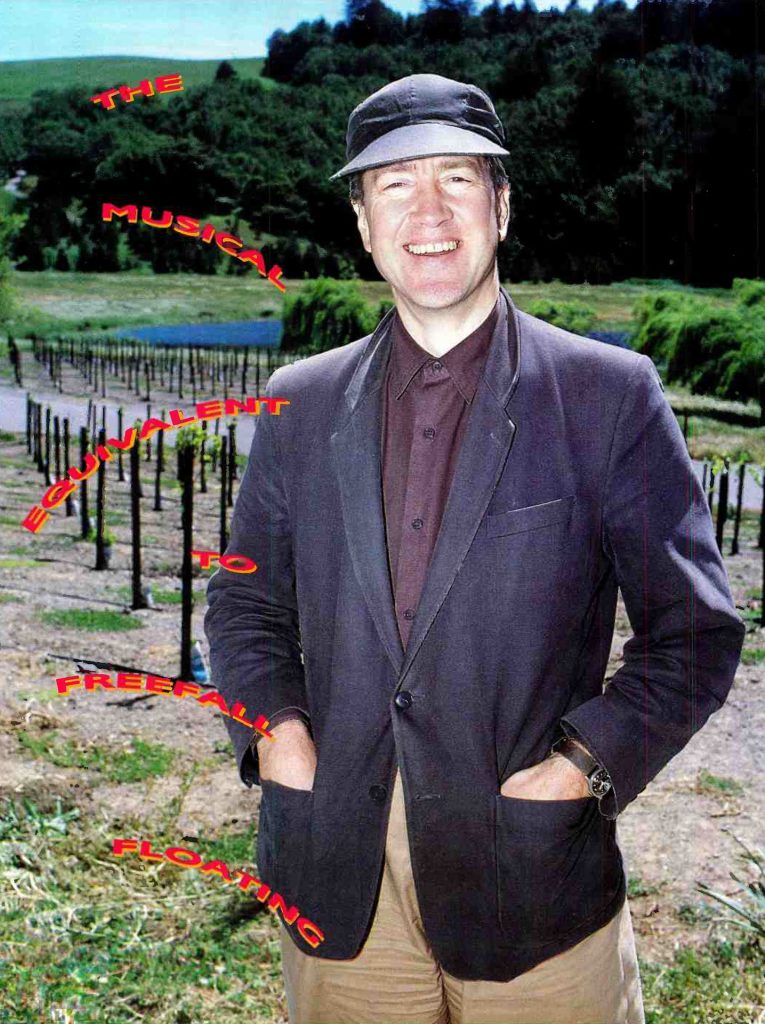
Peter Grame took an incredibly happy shot of David Lynch wearing his “uniform” of khaki pants, black suit jacket and long-billed hat. Notice his shirt collar is buttoned as Lynch didn’t like showing off his neck. Words dance down the page – “Musical Equivalent to Freefall Floating.”
According to long-time Twin Peaks fan Pete Vilmur, these photographs of Lynch were captured in the vineyard at Skywalker Ranch located in Nicasio, California.
“The vineyard was brand new back then,” explained Pete. “Today, it’s matured into a beautiful, bountiful stand of Skywalker wine grapes.”
I’m most curious about David’s wrist watch. I wonder if it was a Seiko, similar to a watch found on Sam Colby from Part 1 of Twin Peaks: The Return. Sam’t model wasn’t released until years later but the watch face David is sporting seems so familiar.
THE GAVIN REPORT, MAY 11, 1990 | PAGES 27-29, 55
Kent and Keith Zimmerman are a twin-brother writing team. They have contributed to or coauthored sixteen books, including A Personal Stand with Trace Adkins, the New York Times bestseller Hell’s Angel with Ralph “Sonny” Barger, and Rotten with John Lydon. They Zimmerman brothers mention a USA Today article which was published on May 2, 1990 titled “David Lynch’s H.S. Art Teacher No Fan Of ‘Peaks.'”
Based on this date, they duo conducted their interview around April 25 during a visit to George Lucas’ Skywalker Ranch. Lynch was mixing sound for his film Wild at Heart which would premiere at the Cannes Film Festival on May 17.
Rather than transcribe the entire interview, I’ll pull key snippets and quotes from their article.
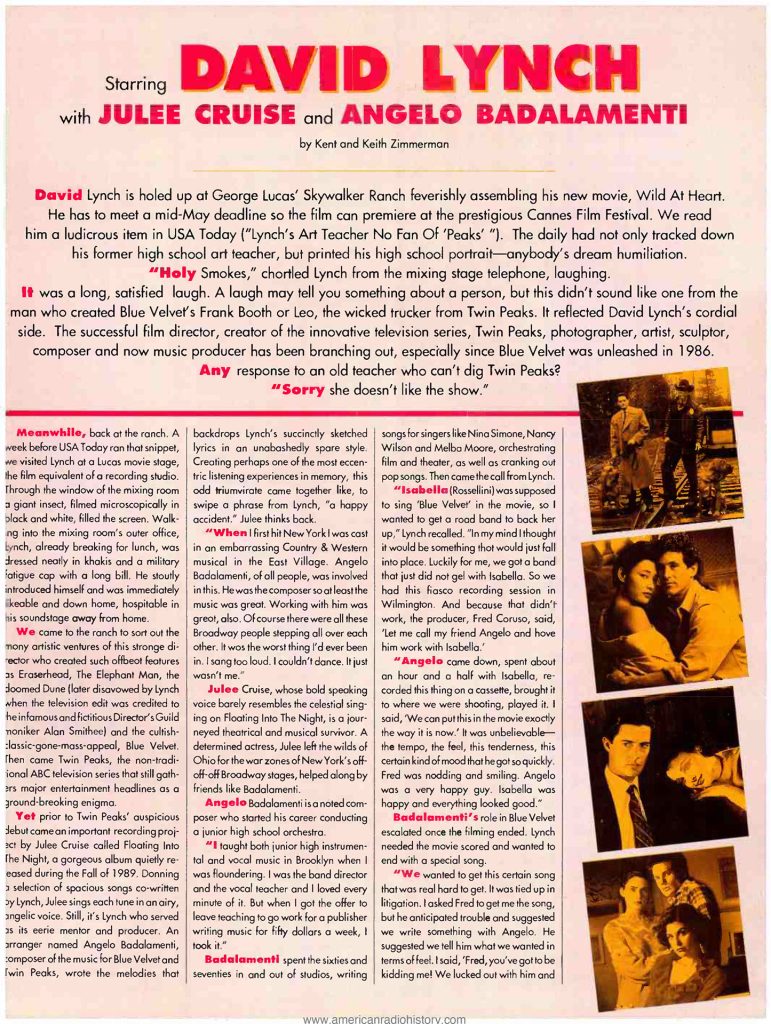
“When I first hit New York I was cast in an embarrassing Country & Western musical in the East Village,” explained Julee Cruise, a determined actress who left the wilds of Ohio for New York’s off-off-off Broadway stages. “Angelo Badalamenti, of all people, was involved in this. He was the composer so at least the music was great. Working with him was great, also. Of course there were all these Broadway people stepping all over each other. It was the worst thing I’d ever been in. I sang too loud. I couldn’t dance. It just wasn’t me.”
Noted composer Angelo Badalamenti started his career conducting a junior high school orchestra.
“I taught both junior high instrumental and vocal music in Brooklyn when I was floundering,” said Angelo. “I was the band director and the vocal teacher and I loved every minute of it. But when I got the offer to leave teaching to go work for a publisher writing music for fifty dollars a week, I took it.”
Badalamenti spent the sixties and seventies in and out of studios, writing songs for singers like Nina Simone, Nancy Wilson and Melba Moore, orchestrating film and theater, as well as cranking out pop songs. Then came the call from Lynch.
“Isabella (Rossellini) was supposed to sing ‘Blue Velvet’ in the movie, so I wanted to get a road band to back her up„” Lynch recalled. ‘In my mind I thought it would be something that would just fall into place. Luckily for me, we got a band that just did not get with Isabella. So we had this fiasco recording session in Wilmington. And because that didn’t-work, the producer, Fred Caruso, said, ‘Let me call my friend Angelo and have him work with Isabella.’
“Angelo came down, spent about an hour and a half with Isabella, recorded this thing on a cassette, brought it to where we were shooting, played it. I said, ‘We can put this in the movie exactly the way it is now.’ It was unbelievable—the tempo, the feel, this tenderness, this certain kind of mood that he got so quickly Fred was nodding and smiling. Angelo was a very happy guy, Isabella was happy and everything looked good.”
Badalamenti’s role in Blue Velvet escalated once the filming ended. Lynch needed the movie scored and wanted to end with a special song.
“We wanted to get this certain song that was real hard to get [ed.- The song was “Song to the Siren” by The Mortal Coil that would later appear in Lost Highway]. It was tied up in litigation. I asked Fred to get me the song, but he anticipated trouble and suggested we write something with Angelo. He suggested we tell him what we wanted in terms of feel. I said, ‘Fred, you’ve got to be kidding met We lucked out with him and Isabella …
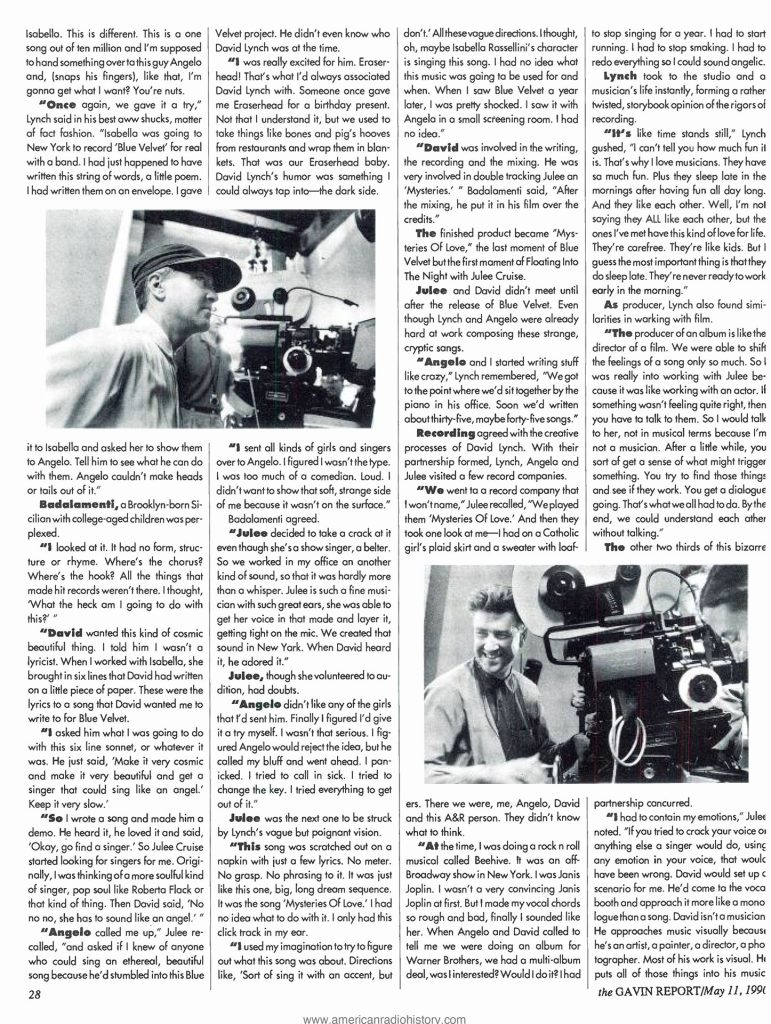
This is different. This is a one song out of ten million and I’m supposed to hand something over to this guy Angelo and, (snaps his fingers), like that, I’m gonna get what I want? You’re nuts.
“Once again, we gave it a try,” Lynch said in his best aww shucks, matter of fact fashion. “Isabella was going to New York to record ‘Blue Velvet’ for real with a band. I had just happened to have written this string of words, a little poem. I had written them on an envelope. I gave it to Isabella and asked her to show them to Angelo. Tell him to see what he can do with them. Angelo couldn’t make heads or tails out of it.”
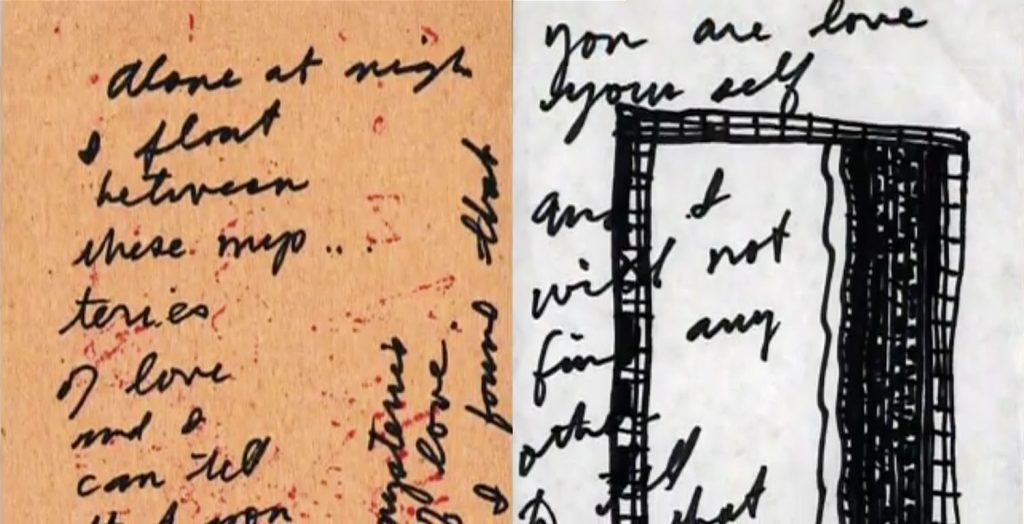
“I looked at it. It had no form, structure or rhyme,” Badalamenti remembered. “Where’s the chorus? Where’s the hook? All the things that made hit records weren’t there. I thought, ‘What the heck am I going to do with this?’
“David wanted this kind of cosmic beautiful thing. I told him I wasn’t a lyricist. When I worked with Isabella, she brought in six lines that David had written on a little piece of paper. These were the lyrics to a song that David wanted me to write to for Blue Velvet.”
“I asked him what I was going to do with this six line sonnet, or whatever it was. He just said, ‘Make it very cosmic and make it very beautiful and get a singer that could sing like an angel. Keep it very slow.'”
“So I wrote a song and made him a demo. He heard it, he loved it and said, ‘Okay, go find a singer.’ So Julee Cruise started looking for singers for me. Originally, I was thinking of a more soulful kind of singer, pop soul like Roberta Flack or that kind of thing. Then David said, ‘No no no, she has to sound like an angel.'”
“Angelo called me up,” Julee recalled, “and asked if I knew of anyone who could sing an ethereal, beautiful song because he’d stumbled into this Blue Velvet project. He didn’t even know who David Lynch was at the time.”
“I was really excited for him. Eraserhead! That’s what I’d always associated David Lynch with,” Julee exclaimed. “Someone once gave me Eraserhead for a birthday present. Not that I understand it, but we used to take things like bones and pig’s hooves from restaurants and wrap them in blankets. That was our Eraserhead baby. David Lynch’s humor was something I could always tap into—the dark side.
“I sent all kinds of girls and singers over to Angelo,” continued Julee. “I figured I wasn’t the type. I was too much of a comedian. Loud. I didn’t want to show that soft, strange side of me because it wasn’t on the surface.”
Badalamenti agreed.
“Julee decided to take a crack at it even though she’s a show singer, a belter. So we worked in my office an another kind of sound, so that it was hardly more than a whisper. Julee is such a fine musician with such great ears, she was able to get her voice in that made and layer it, getting tight on the mic. We created that sound in New York. When David heard it, he adored it.”
Julee, though she volunteered to audition, had doubts.
“Angelo didn’t like any of the girls that I’d sent him. Finally I figured I’d give it a try myself. I wasn’t that serious. I figured Angelo would reject the idea, but he called my bluff and went ahead. I panicked. I tried to call in sick. I tried to change the key. I tried everything to get out of it.”
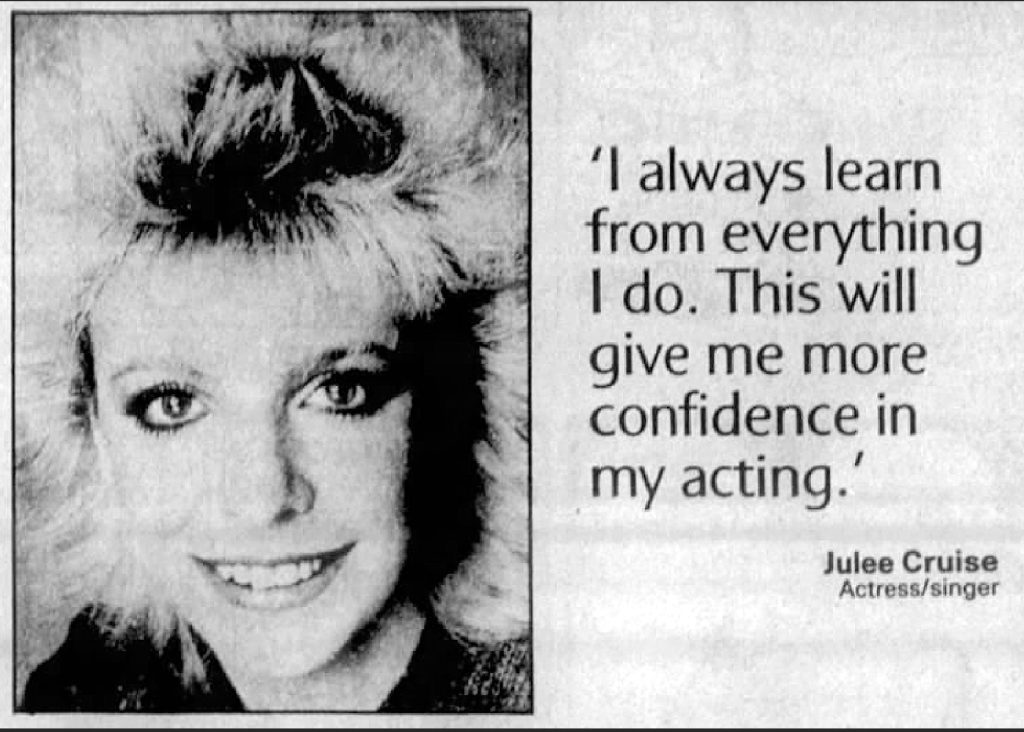
Julee was the next one to be struck by Lynch’s vague but poignant vision.
“This song was scratched out on a napkin with just a few lyrics. No meter. No grasp. No phrasing to it. It was just like this one, big, long dream sequence. It was the song ‘Mysteries Of Love.’ I had no idea what to do with it. I only had this click track in my ear.”
“I used my imagination to try to figure out what this song was about. Directions like, ‘Sort of sing it with an accent, but don’t.’ All these vague directions. I thought, oh, maybe Isabella Rossellini’s character is singing this song. I had no idea what this music was going to be used for and when. When I saw Blue Velvet a year later, I was pretty shocked. I saw it with Angela in a small screening room. I had no idea.”
“David was involved in the writing, the recording and the mixing. He was very involved in double tracking Julee on ‘Mysteries,” Badalamenti said, “After the mixing, he put it in his film over the credits.”

The finished product became “Mysteries Of Love,” the last moment of Blue Velvet but the first moment of Floating Into The Night with Julee Cruise.
Julee and David didn’t meet until after the release of Blue Velvet. Even though Lynch and Angelo were already hard at work composing these strange, cryptic songs.
“Angelo and I started writing stuff like crazy,” Lynch remembered, ‘We got to the point where we’d sit together by the piano in his office. Soon we’d written about thirty-five, maybe forty-five songs.”
Recording agreed with the creative processes of David Lynch. With their partnership formed, Lynch, Angelo and Julee visited a few record companies.
“We went to a record company that I won’t name,” Julee recalled, ‘We played them ‘Mysteries Of Love.’ And then they took one look at me—I had on a Catholic girl’s plaid skirt and a sweater with loafers. There we were, me, Angelo, David and this A&R person. They didn’t know what to think.
“At the time, I was doing a rock n roll musical called ‘Beehive.’ It was an off-Broadway show in New York. I was Janis Joplin. I wasn’t a very convincing Janis Joplin at first. But I made my vocal chords so rough and bad, finally I sounded like her. When Angelo and David called to tell me we were doing an album for Warner Brothers, we had a multi-album deal, was I interested? Would I do it? I had to stop singing for a year. I had to start running. I had to stop smoking. I had to redo everything so I could sound angelic.”
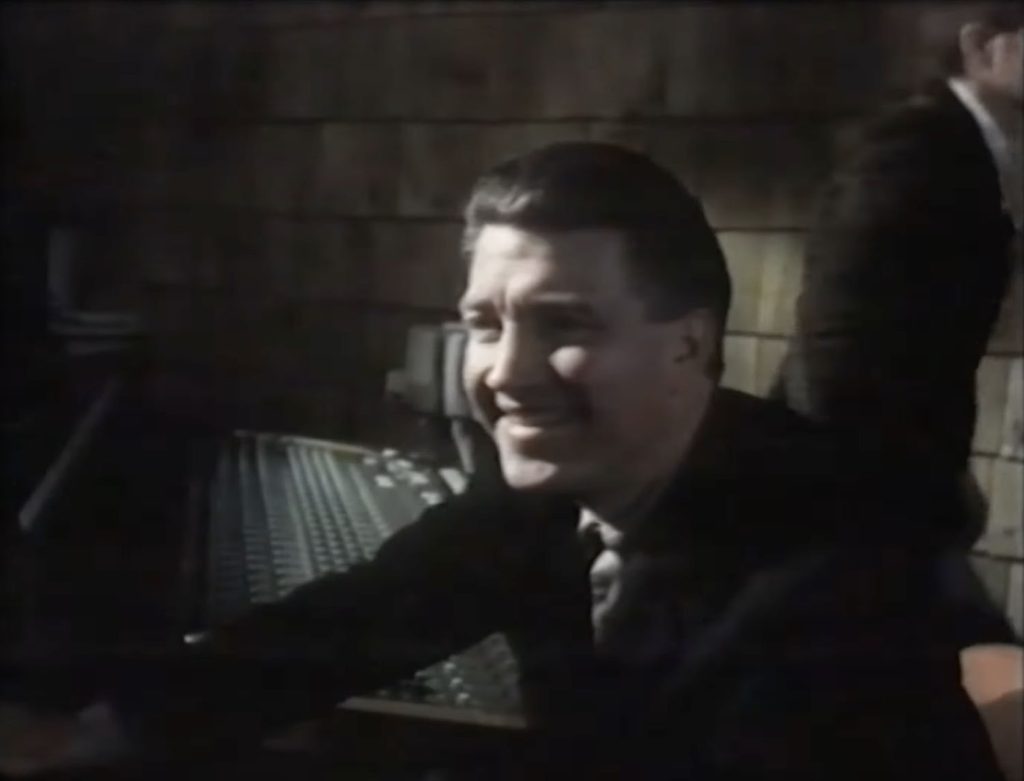
Lynch took to the studio and a musician’s life instantly, forming a rather twisted, storybook opinion of the rigors of recording.
“It’s like time stands still,” Lynch gushed, “I can’t tell you how much fun it is. That’s why I love musicians. They have so much fun. Plus they sleep late in the mornings after having fun all day long. And they like each other. Well, I’m not saying they ALL like each other, but the ones I’ve met have this kind of love for life. They’re carefree. They’re like kids. But I guess the most important thing is that they do sleep late. They’re never ready to work early in the morning.”
As producer, Lynch also found similarities in working with film.
“The producer of an album is like the director of a film. We were able to shift the feelings of a song only so much. So I was really into working with Julee because it was like working with an actor. If something wasn’t feeling quite right, then you have to talk to them. So I would talk to her, not in musical terms because I’m not a musician. After a little while, you sort of get a sense of what might trigger something. You try to find those things and see if they work. You get a dialogue going. That’s what we all had to da. By the end, we could understand each other without talking.”
The other two thirds of this bizarre partnership concurred. “I had to contain my emotions,” Julee noted. “If you tried to crack your voice or anything else a singer would do, using any emotion in your voice, that would have been wrong. David would set up a scenario for me. He’d come to the vocal booth and approach it more like a monologue than a song. David isn’t a musician He approaches music visually because he’s an artist, a painter, a director, a photographer. Most of his work is visual. He puts all of those things into his music. That’s what makes it different.

“I think David sometimes tricked me into doing what he wanted me to do. I think he’s a great director. We have some things in common as far as me being from the Midwest. I like white bread and lawn mowers. I have that in common with David. But who knows? He sees a glimmer in my eye and then we go for it. He knows that I’m on to something.”
“The great experience was being in the studio,” noted Angelo “and doing things that were very unusual. I must admit that a lot of it was unusual to me. David loves to experiment. A song like ‘Into The Night’ is very dark. It’s going on very cool, slow and dark. The he suggests this one measure that sounds like a ninety piece Wagnerian orchestra that blew us all away. I’ve learned to try things when David asks.”
“I like to have two or three things going at once,” Lynch offered. “That’s the concept called double or triple exposure. The visual equivalent is that every time you do a dissolve on film, there’s a point where it’s a double exposure, two images, one on top of another. Sometimes they’re beautiful and sometimes they’re not. You plan a dissolve to be as beautiful as possible. When you do double exposures, sometimes you get beautiful happy accidents.”

After many listens to Floating Into The Night, the quintessential song becomes the concluding “The World Spins,” a lonely song from Lynch’s dark world.
“That’s my favorite track and it’s David’s, too,” Julee admitted “I did that alone with David in one day. Angelo was gone and we worked all day long on that one song. We took it phrase by phrase. I was in total darkness in the studio. I have a special feeling about that song. I can’t really tell you what I was thinking, but it’s a song that’s devastatingly stark, alone and almost peacefully numb. I don’t wont to tell you what I was thinking while I was singing. Every time I sing that song, I cry. I don’t mean to make it sound so corny, but there’s something very, very lonely about that song.”
Like the songs that came before on napkins and envelopes, “The World Spins” had an equally auspicious, informally spontaneous genesis.
“I wrote the lyrics to that in a restaurant,” said Lynch. “I was having lunch with my daughter and I wrote this certain kind of five line poem. So we decided to write this song in the restaurant. It was one of these places that had paper on the table instead of a table cloth. So we wrote it there. After we recorded it, we added that bass guitar. Then the saxophone parts, what’s that little sax? Yes, soprano sax. This guy, Al Regni – a great saxophone player – his saxophones were locked up at this theater he was playing at. He came over at about one or two in them morning. Then we added these bells.”
Melodically, things were flowing between Lynch and Angela in the studio.
“You know, Angelo has all these melodies inside him. It’s amazing. It used to be that he’d play something that I’d kinda liked,” added Lynch, “But it wasn’t quite right. I’d be embarrassed. I didn’t want to hurt his feelings. I thought it might be the only melody this poor guy had. So I’d just say, ‘Hey that’s pretty good.’ Later on, if I didn’t like something—everything is so subjective – it didn’t matter. He’s one of these people who’s so happy, he didn’t have a problem with it. He’ll just change tracks and write another one and another one. Then he starts smiling.”
Lynch remained intently involved in the Julee Cruise concept, even controlling the cover art which Julee aptly describes with satisfaction.
“I’m thrilled with the packaging. That’s David. He was playing around with this clay thing that had nothing to do with the album. He was making this sculpture. He took a photo of it. It’s a little doll with a pointed hand, slightly deformed, kind of pink and off. I was thrilled with the artwork. It’s as unique as the record.”
One day, during one of the writing sessions, Lynch approached Angelo about a new television show he was creating. “A murder mystery soap opera,” is how Lynch describes Twin Peaks. The music from Twin Peaks drew heavily from the mood of the Julee Cruise sessions.
“The music from Twin Peaks draws from the same sound and spirit.” Angelo said. “It was all done at the same time. As we were doing Julee Cruise, David told us about his plan to do a Blue Velvet kind of soap opera. He came into the office as we were onto this kind of mentality and feel. The plan was also to use some of the Julee Cruise music as well.

“Things come out of that off-center mood. Nothing in Twin Peaks is really straight on, and that includes the music. Even the love scenes start off with a dark, somber (sings the synth line) melody. Originally David told me he need five parts. A dark mysterious thing that would start with an anticipatory line that builds very slowly into a climax that should tear people’s hearts out. But in a minimal way. After the climax, the music needed to fall very slowly, going back to that somber, serious melody line. Then the love theme climbs again with off-setting notes, then it climaxes with the chorus. Then it falls again. The falling music works against shots like the mother dropping the telephone when she hears of her daughter’s death. Then the camera goes down, panning the telephone wire.”
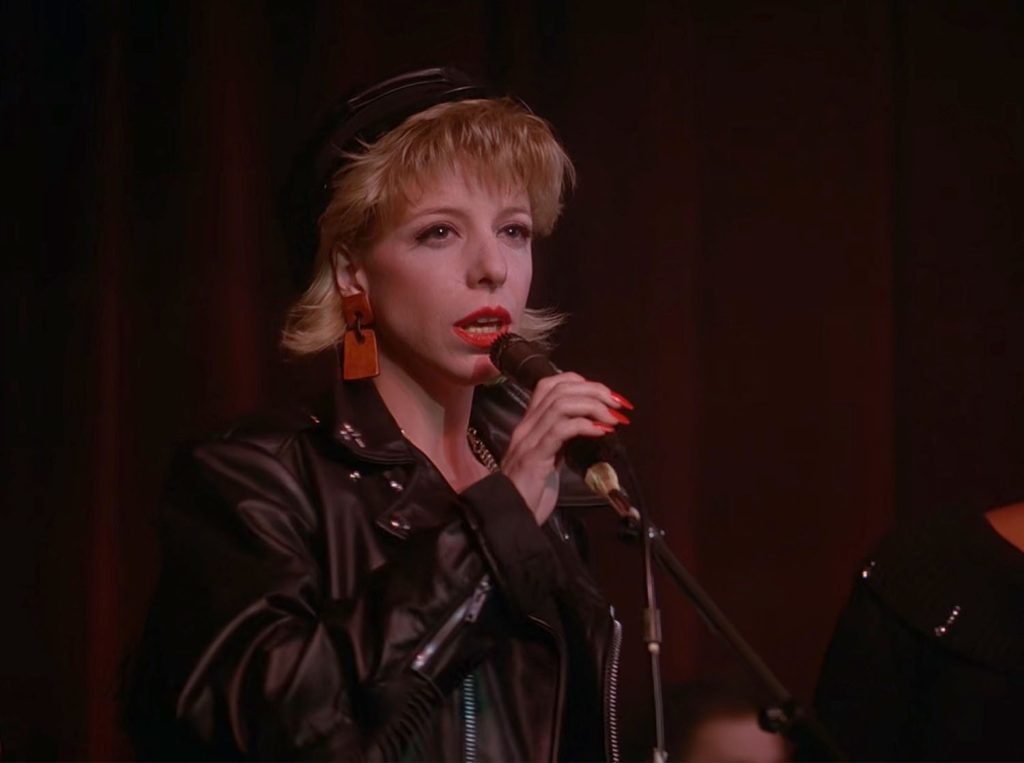
Julee also appears in the ABC series as an oblivious singer performing with her band at the Roadhouse.
“The theme for Twin Peaks is ‘Falling’ without the vocal. I’ll be seen more and more in the Roadhouse. Hopefully it will get picked up by ABC and I’ll be seen more during the next season. I believe they’re going to incorporate ‘Falling’ into the show with more voice. Then they might be using ‘Into The Night’ and a number of other songs that will recur within the show.”
“When David mixed the music for the show,” Angelo added, “I was so delighted. He keeps the music up. It’s not just background. There’s real meaning behind it. There are examples of double and triple exposure of elements and the coming together of rhythmical patterns, going into these strange chords then getting a couple of acoustic clarinets playing these dissonant quarter tones that are both strange and sensuous. That’s for the character Audrey.”

Are there indeed themes for certain characters?
“Yes, absolutely. Audrey has her own thing, actually two things. One is when she’s sensuous and playing these little games with everybody. The other is when she becomes a voyeur in her little closet. I have another theme for her little world. Kyle Maclachlan, Special Agent Cooper, has his own kind of cool Jazz thing. When we use the melodic line against it, it’s not just a pretty melodic line. It sounds up, but it’s really very off center.”
As for the themes, Lynch disagrees.
“That’s not really true. Angelo might think it’s true. The themes have been switched around so much during the episodes there’s nobody really assigned to certain themes. The way the music for the show works is that Angelo sends the stuff to the show’s musical director who then puts it on a video tape and sends it tome. Then I write in my own comments.”

The musical control Lynch holds over the show stems from the hold he has over all of Twin Peaks content. He’s the boss. Though he certainly takes the show’s ups and downs in stride, it’s clearly important to him and he displays that control when guiding the course of the show.
“I have a lot of control over the plot because Mark (Frost) and I make up the plot. If I don’t write the script, then I read it and put in my notes. So you have control there, but sometimes you’re very pleasantly surprised at how much a writer can bring to it. Sometimes certain things are wrong and they need to be fixed. The plot line has to be set up in advance and the writers flesh out the plot lines.”
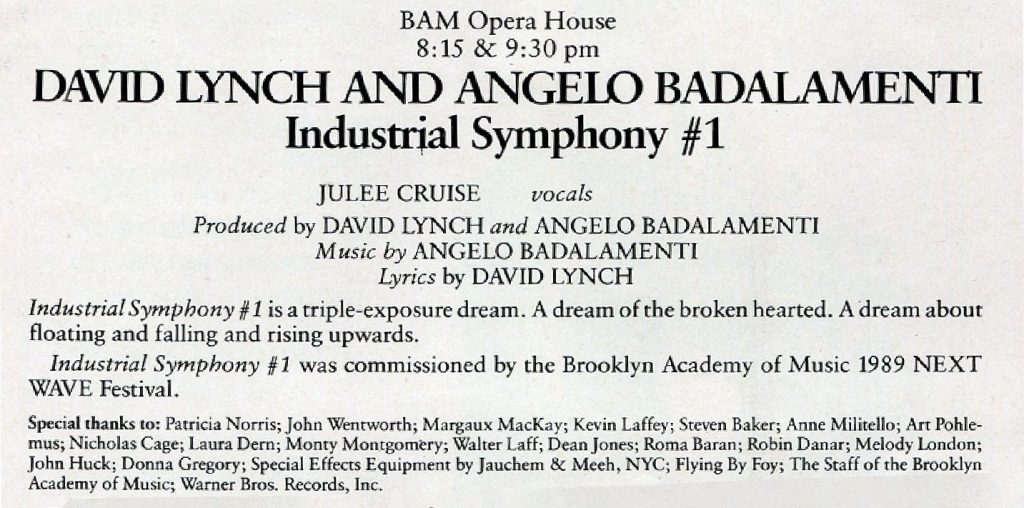
In addition to Blue Velvet, Julee Cruise and Twin Peaks an even more musically severe project surfaced. Industrial Symphony #1 is a strange musical happening that none of the trio seems willing or maybe able to fully describe. The piece was performed once at the Brooklyn Academy Of Music, the premiere site of both Laurie Anderson’s recent stage show and Lou Reed and John Cale’s tribute to Andy Warhol, “Songs For Drella.”
First Julee tries.
“The video for “Rocking Back Inside My Heart” came from this work called Industrial Symphony #1. It was David Lynch and Angelo Badalamenti presents Industrial Symphony #1. I did all the vocals. I was supposed to be the dream girl. I was in the trunk of a car with my prom dress and my white wig. Then I was hoisted eighty feet in the air, flying very slowly—not comically. There was a naked girl on stage. There were oil rigs. The Julee Cruise songs were in between these harsh, industrial violent sounds and visions. There were two baby dolls, completely bald with their eyes blow-torched out that came down from the ceiling. Then there were B-52 bombers. There was also a deer on stilts that was bloody. It sounds so crazy, but it was quite striking, visually. It was fun to do. ‘Rocking Back Inside My Heart’ was just a segment of Industrial Symphony #1 . The whole thing was forty-five minutes long.”
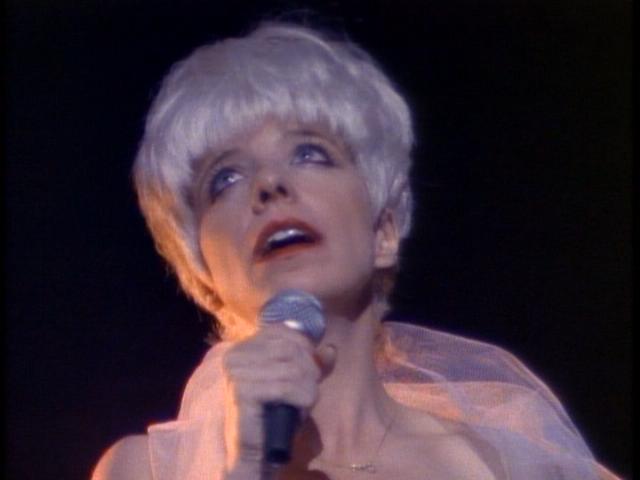
“It’s a theater piece, I guess,” Lynch explained, “I don’t know exactly what to call it. I had been talking to Angelo about Industrial Symphony #1. We’d even started writing stuff for it a long time ago. When the Brooklyn Academy Of Music called, we mentioned it to them. They loved the title of it. Then we had to make it up. It’s a bunch of things together. It was actually called Industrial Symphony #1 And The Dream Of The Broken Hearted. It’s a break-up of a love story with an industrial background.”
More is in store for this creative trio, whose paths are destined to cross again as soon as Lynch finishes up with the release of Wild At Heart, his new film based on the novel by Barry Gifford starring Nicholas Cage and Laura Dern.
“We have about three or four songs already done for the next album,” said Julee, “We’re anticipating a second album. We’re playing around with an idea for a murder mystery album. Most of the songs are centered around somebody trying to kill me. Maybe that will be later, some kind of theme album. That would be nice because the Julee Cruise character is so fragile and strange.”
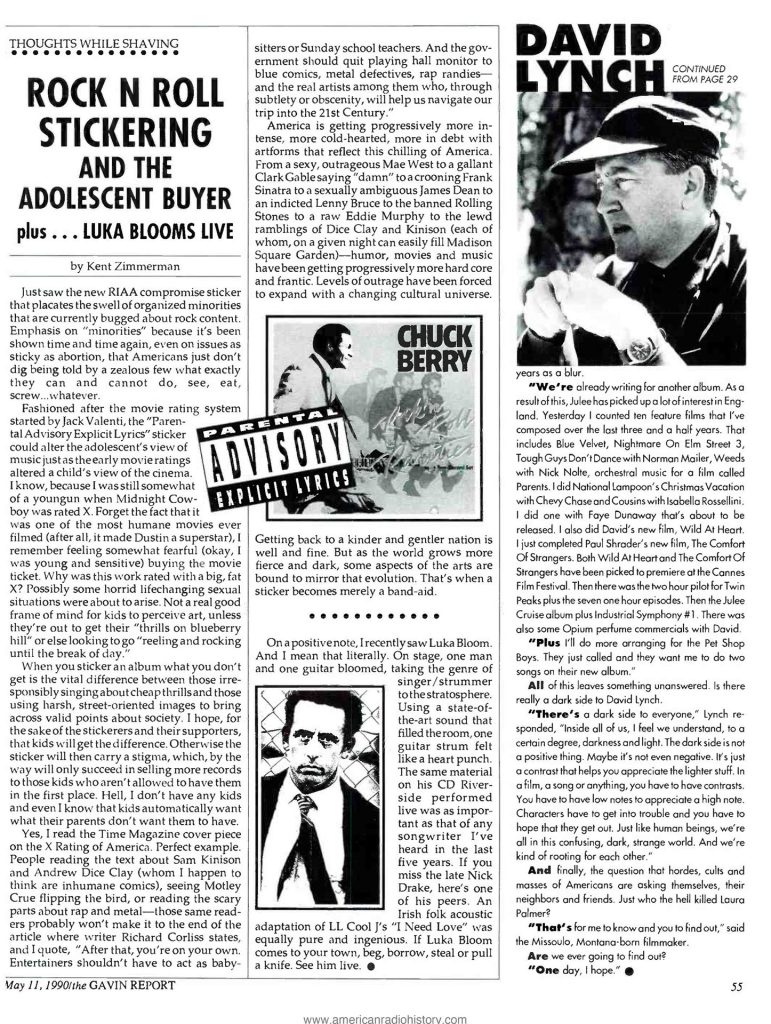
Badalamenti sees the past three years as a blur.
“We’re already writing for another album. As a result of this, Julee has picked up a lot of interest in England. Yesterday I counted ten feature films that I’ve composed over the last three and a half years. That includes Blue Velvet, Nightmare On Elm Street 3, Tough Guys Don’t Dance with Norman Mailer, Weeds with Nick Nolte, orchestral music for a film called Parents. I did National Lampoon’s Christmas Vacation with Chevy Chase and Cousins with Isabella Rossellini. I did one with Faye Dunaway that’s about to be released. I also did David’s new film, Wild At Heart. I just completed Paul Shrader’s new film, The Comfort Of Strangers. Both Wild At Heart and The Comfort Of Strangers have been picked to premiere at the Cannes Film Festival. Then there was the two hour pilot for Twin Peaks plus the seven one hour episodes. Then the Julee Cruise album plus Industrial Symphony #1. There was also some Opium perfume commercials with David.
“Plus I’ll do more arranging for the Pet Shop Boys. They just called and they want me to do two songs on their new album.”
All of this leaves something unanswered. Is there really a dark side to David Lynch?
“There’s a dark side to everyone,” Lynch responded, “Inside all of us, I feel we understand, to a certain degree, darkness and light. The dark side is not a positive thing. Maybe it’s not even negative. It’s just a contrast that helps you appreciate the lighter stuff. In a film, a song or anything, you have to have contrasts. You have to have low notes to appreciate a high note. Characters have to get into trouble and you have to hope that they get out. Just like human beings, we’re all in this confusing, dark, strange world. And we’re kind of rooting for each other.”
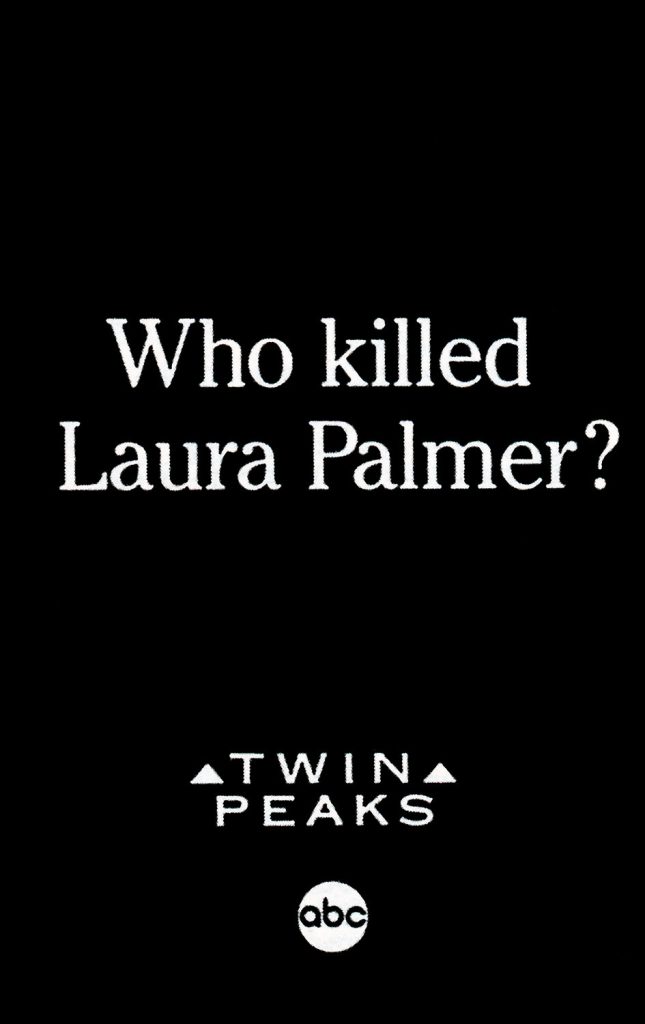
And finally, the question that hordes, cults and masses of Americans are asking themselves, their neighbors and friends. Just who the hell killed Laura Palmer?
“That’s for me to know and you to find out,” said the Missoula, Montana-born filmmaker.
Are we ever going to find out?
“One day, I hope.”
Discover more from TWIN PEAKS BLOG
Subscribe to get the latest posts sent to your email.

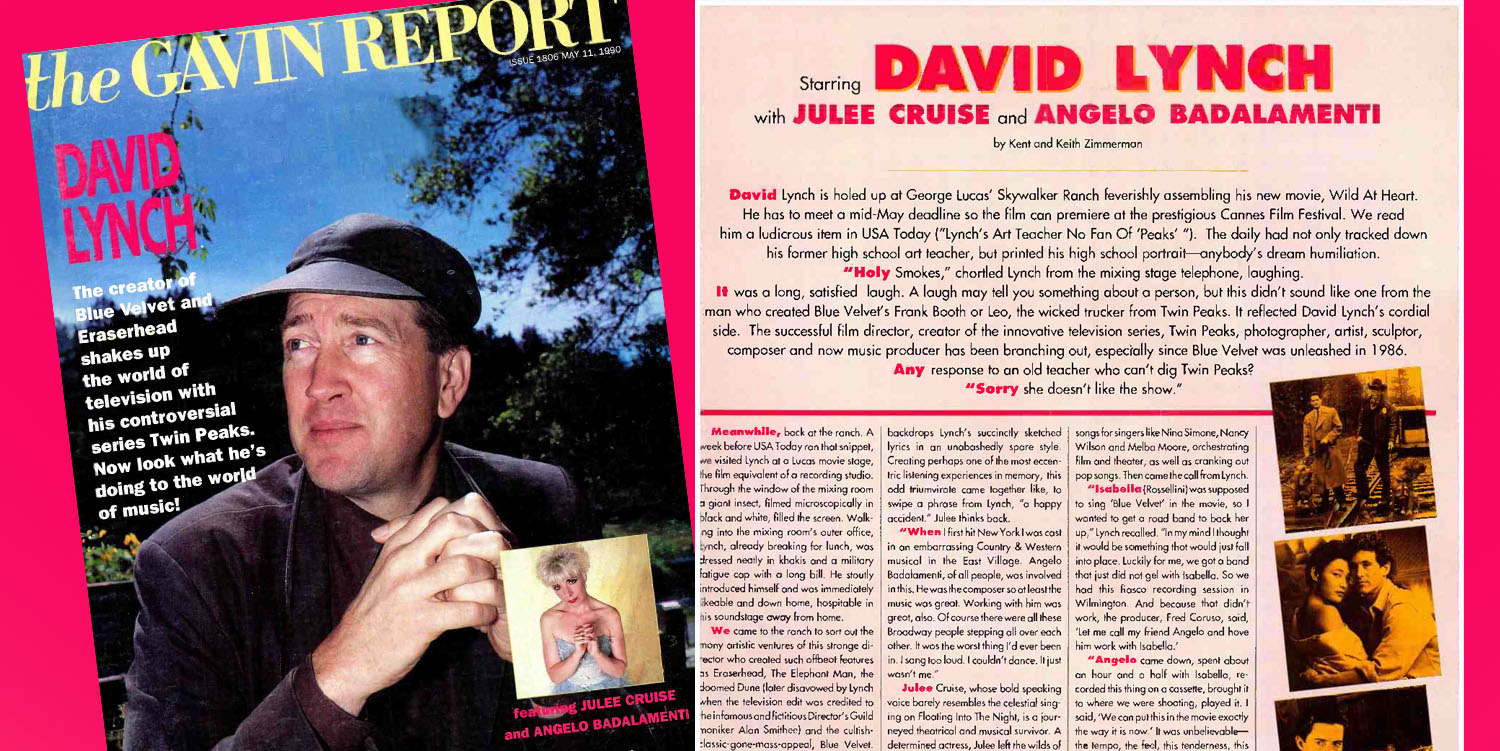

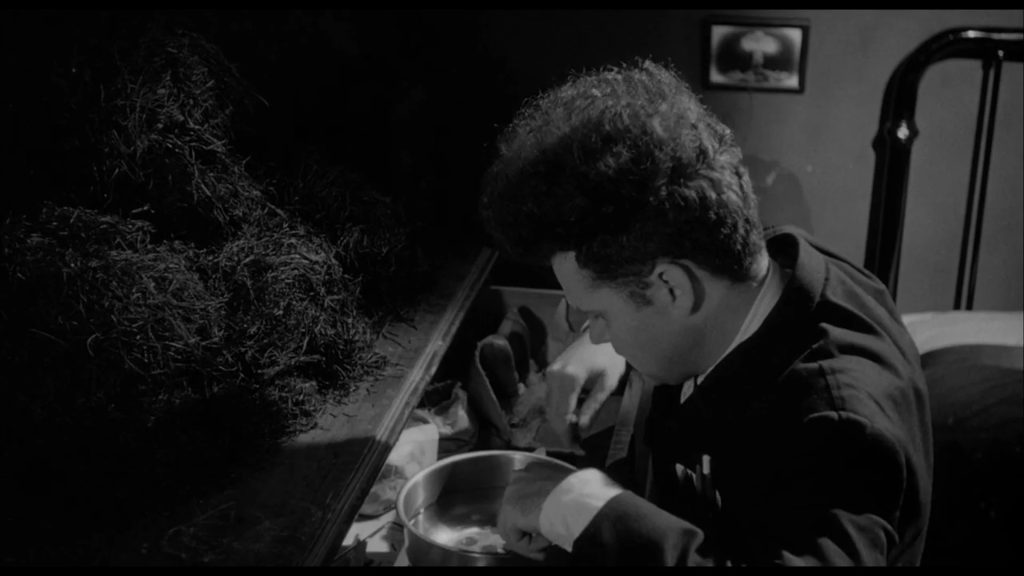
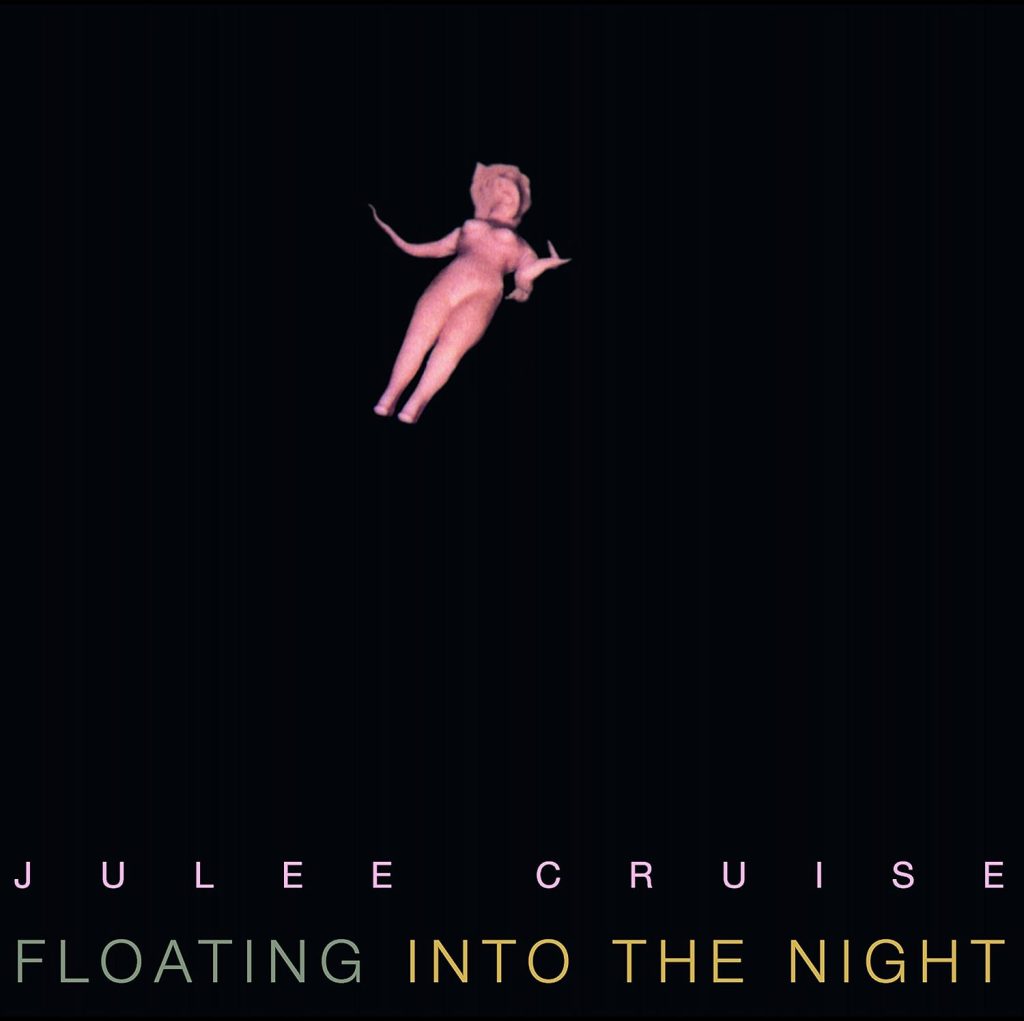
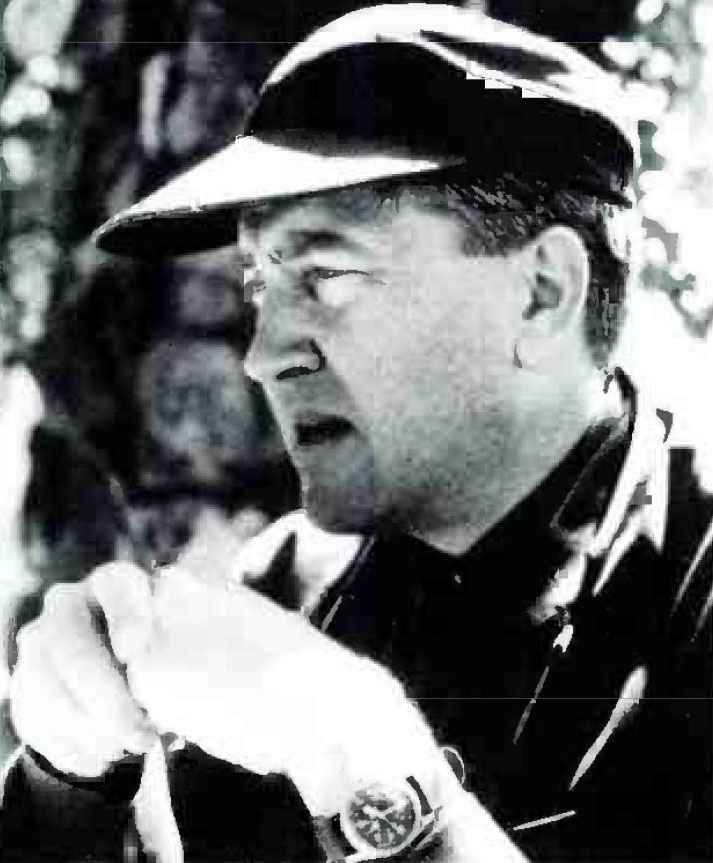

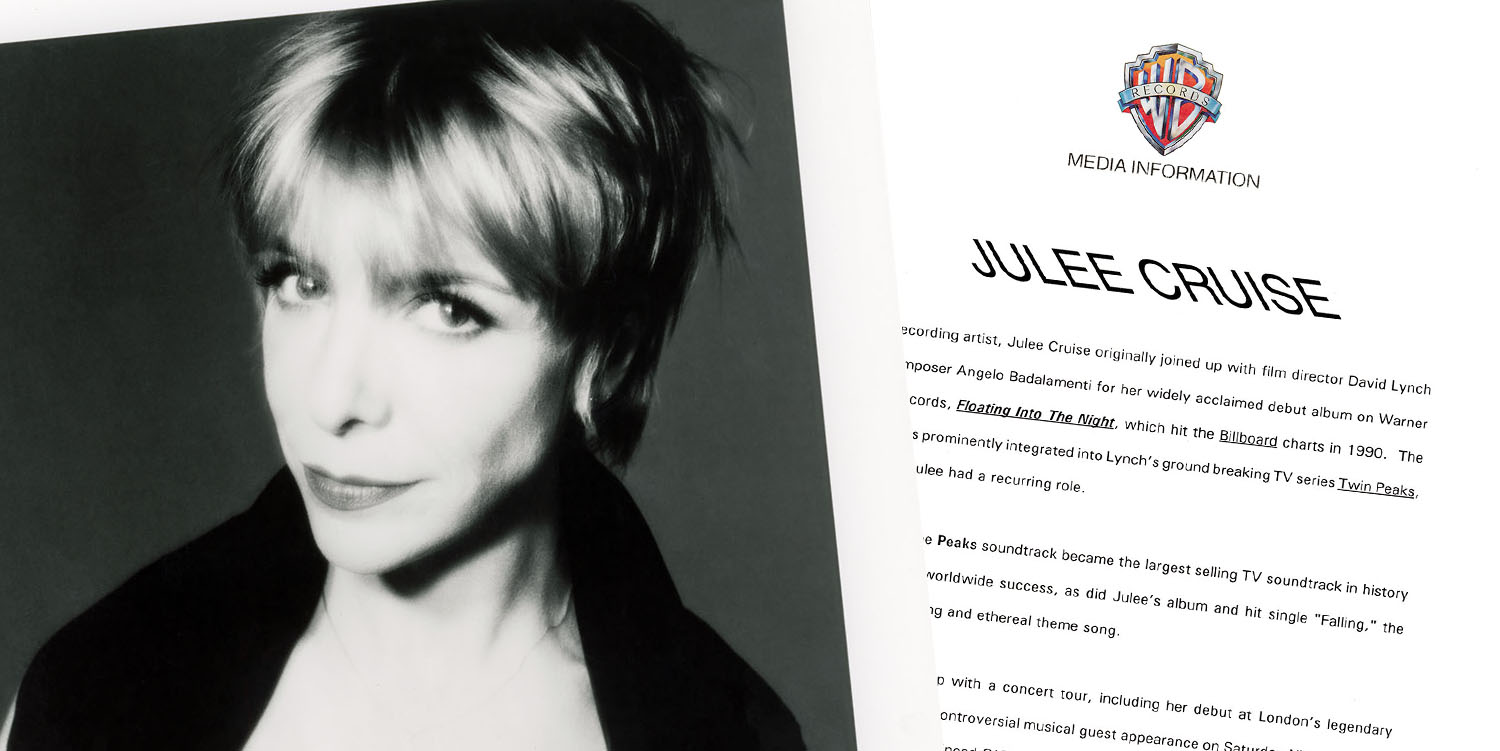

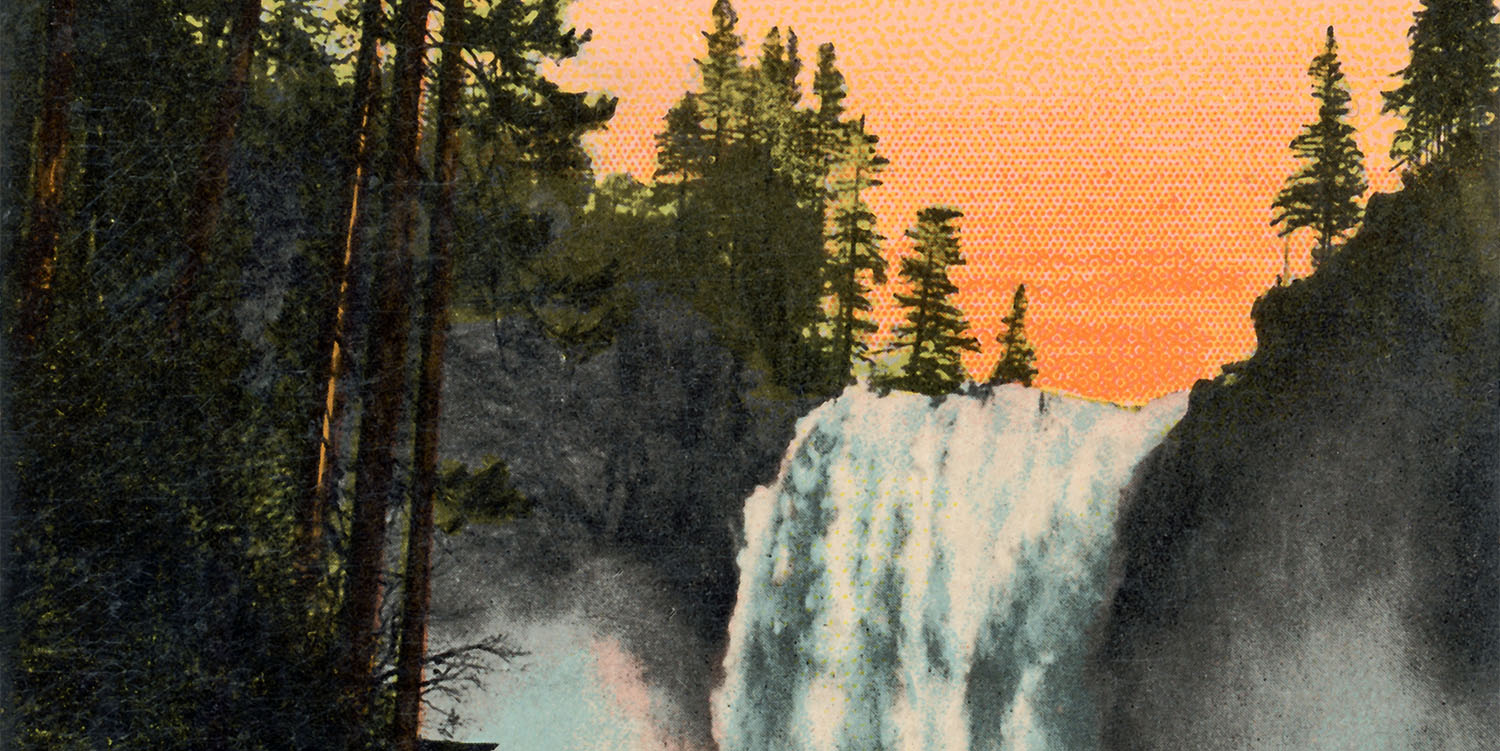

Wow! Great read! When my sister and I heard that Julee had taken over for singer Cindy Wilson in the B-52’s for a bit, we we’re shocked because Cindy’s vocals are so beefy and Julee’s are so airy. Now knowing she performed Janis Joplin, we’re going to have to see if we can find some of her pre-Lynch stuff!
So many interesting facts in this article that I didn’t know before. It’s fantastic. Thanks for sharing!
Those shots of Lynch on the cover and in front of the vineyard were done at George Lucas’ Skywalker Ranch. The vineyard was brand new back then — today it’s matured into a beautiful, bountiful stand of Skywalker wine grapes 😉
@Pete – Thank you!! That makes so much sense based on where Kent and Keith interviewed Lynch and company. I will update the story with credit to you 🙂